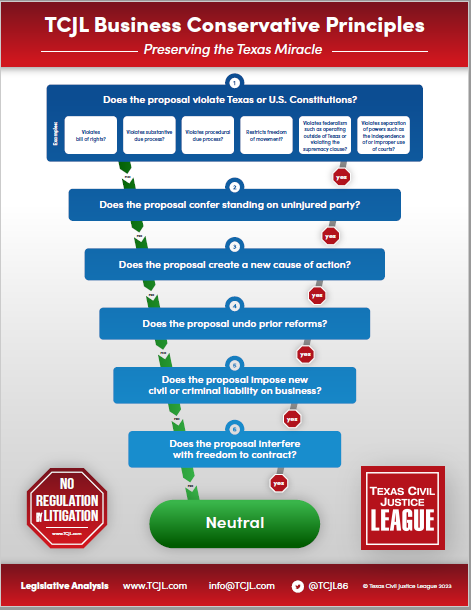 The Houston [14th] Court of Appeals has found harmful charge error in a case that resulted in a $4 million jury verdict and remanded it for new trial.
The Houston [14th] Court of Appeals has found harmful charge error in a case that resulted in a $4 million jury verdict and remanded it for new trial.
Priority Artificial Lift Services, LLC and EP Energy E&P Company, L.P. v. Michael Chiles (No. 14-22-00473-CV; March 21, 2024) arose from a workplace accident at an oil and gas processing facility owned by EP Energy. EP entered into a master service agreement with Priority to provide lease operators and other employees. The agreement provided that Priority was an independent contractor and that the employees worked for Priority, not EP Energy. EP Energy had a similar agreement with Hawk Trucking, which supplied its employee, Plaintiff Chiles, to the site on the day of the accident. Chiles job was to clean the site’s heater treater tanks. While performing the operation, one of the two lease operators supplied by Priority opened a valve without alerting Chiles. Chiles, who was holding the hose at the time, was sprayed with high-pressure liquid and knocked down. He suffered a rotator cuff injury that subsequently required two surgeries to repair. He sued Priority and EP Energy. A jury returned a $4 million verdict, assigning 80% of the fault to EP Energy and 20% to Priority. The trial court entered judgment on the verdict. Defendants appealed.
In an opinion by Justice Hassan, the court of appeals reversed and remanded for new trial. Priority contended on appeal that the trial court abused its discretion by refusing to submit a jury charge on the borrowed employee doctrine. Under the doctrine, an employee of a general employer may be considered a “borrowed” employee of another employer if there is a shift in the right to direct and control the details and manner of the employee’s work. Priority argued that in this case the right to direct and control the allegedly negligent employee shifted to EP Energy when the employee reported to the site that day, making EP the employer for vicarious liability purposes, and that the trial court should have submitted the charge it requested. The court agreed. Based largely on evidence that the EP Energy direct employee in charge of the site that day neglected to brief the employee on relevant safety procedures for the heater treater tank cleaning procedure before the employee entered the site, the court held that a jury could have concluded that he was the borrowed employee of EP Energy. Since a jury finding to that effect would have exonerated Priority from liability altogether, the court held further that the error was harmful and probably resulted in an improper verdict.
The question then became whether to remand the whole case for new trial or just the borrowed employee doctrine issue itself. The court opted to remand the whole case because severing it would disadvantage EP Energy, which would be excluded altogether from a new trial on that issue alone. Because a jury had already found EP Energy 80% at fault, there would be no incentive for Plaintiff to mount a defense in the new trial because EP Energy was jointly and severally liable anyway. In this scenario, moreover, a jury verdict in favor of Priority on the borrowed employee doctrine would cost EP any chance at assigning fault to Priority and, consequently, any right of contribution. The court thus decided to remand the whole thing without reaching EP Energy’s issues on appeal.
Chief Justice Christopher filed a concurring and dissenting opinion that addressed this part of the court’s decision. She would first have considered EP’s issues, particularly those that challenged the legal and factual sufficiency of the damages evidence (Priority also complained about that). Without doing that, she reasoned, the majority did not find any error in the part of the judgment holding EP liable that justified remanding the whole case. Chief Justice Christopher did, however, on the whole agree with the majority that the whole case should be retried based on serious questions about the damages evidence. So they all got the same point in the end.
Finally, the court rejected EP Energy’s contention that the trial court erred when it denied EP’s motion for summary judgment under Chapter 95, CPRC. As noted above, EP alleged that this case fell under Chapter 95 because Priority was an independent contractor hired “to construct, repair, renovate, or modify” an improvement to the owner’s property and that, as the property owner, EP’s liability was limited if the alleged injury arose from the condition or use of the improvement. The court rejected this argument, concluding that EP failed to establish that Priority’s employee was hired “to construct, repair, renovate, or modify” an improvement, since all the employee was doing was cleaning equipment that was already in perfect working order. The court cited several Chapter 95 decisions that distinguished “actions that effect some change on the improvement’s condition, form, or qualities” and those that don’t. Cleaning the tanks, the court determined, don’t do that.
This is an interesting case, particularly with respect to the disagreement between the majority and Chief Justice Christopher as to the grounds for partial remand and the determination of “unfairness to the parties.” At the same time, $4 million for a rotator cuff injury might raise some eyebrows and probably needs to be looked at anyway. From the majority’s perspective, it was probably easier to accomplish that by focusing on the charge error.












